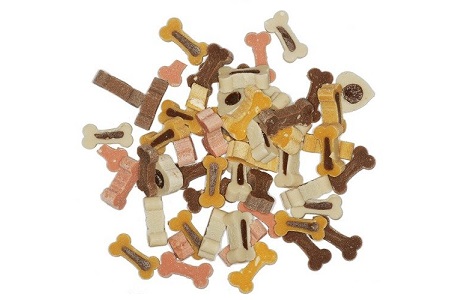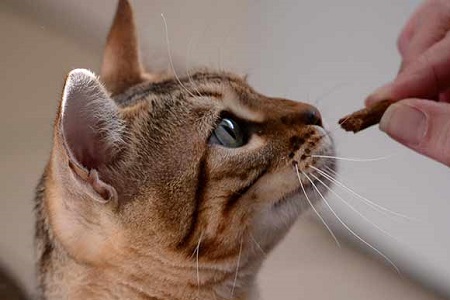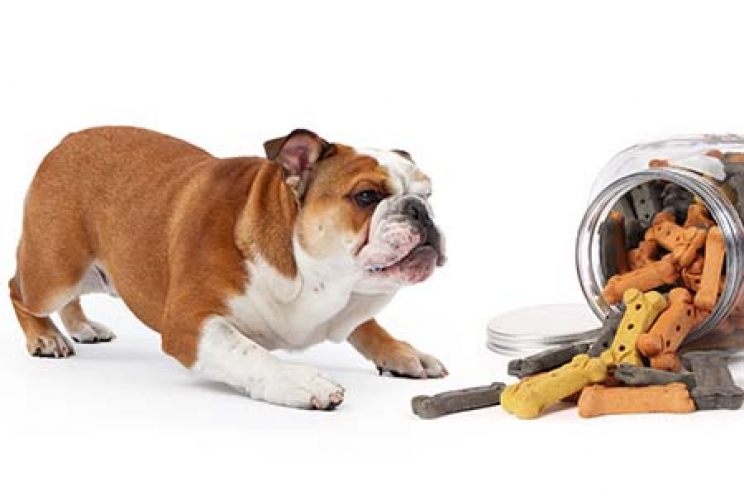Most dog and cat owners have large stocks of treats for their four-legged friends at home. These are sold in many formulations, from classic biscuits to morsels and sticks. In reality, we often tend to exaggerate with these products offering food to our animal out of their normal meal routine. Here you can find how to choose the perfect snack for your animal.
The formats
The snacks are specially designed to supplement the diet of dogs and cats, helping owners to reward them during training or simply to give them a tasty break. There are many formats on the market, which differ in shape, size, ingredients and even in functions.

As for the appearance, we can distinguish them mainly in biscuits, sticks, bones and small morsels. In addition to these classic snacks, we also find other products, specially designed to facilitate the teeth hygiene, thanks to their fairly rigid and irregular surface.
The ingredients represent one of the main elements to take into consideration when choosing the most suitable snack for our friend. In fact, most of these products are presented in all respects as a complete food, rich in all the nutrients needed by the animal, but above all in calorie intake.
This is precisely what we need to pay attention to. If we choose to allocate the snack to dog training, we will have to use a lot of them a day, completely unbalancing our pet's diet. At the same time, if our four-legged friend is obese or suffers from particular health problems, we can compromise his health conditions even more.
For this reason, we can find snacks with various ingredients. For example, we can find some low-calorie products specifically designed to control the diet of an overweight animal. At the same time, we can buy low-sugar snacks, based on whole grains, especially designed for diabetic animal. Furthermore, some snacks are supplemented with some essential substances for the animal, such as vitamins, mineral salts or Omega-3 fatty acids, to improve the well-being and health of dogs and cats. In the last period, excellent snacks have also been made based on single-protein or nutraceutical ingredients, specific for food allergies and intolerances.
Your animal can face many problems. However, the pet industry always finds a solution to prevent or alleviate them.
 Tips
Tips
- We avoid giving too many snacks a day, but stick to the diet of our animal and the instructions on the product packaging;
- We use snacks only when needed;
- We choose a specific snack for our specific situation or purpose;
- Let's try to alternate the premium snacks with the normal food of our animal, decreasing it from its daily ration;
- If the animal likes them, we choose pieces of fruit and vegetables to alternate with classic snacks;
- Let's remember that snacks are not the only reward granted, but that our friends can find a few minutes of caresses just as pleasant;
- We do not give our pet a snack that is contraindicated for its health problems;
- We leave the larger snacks (biscuits and buffalo bones) as an isolated reward, choosing small, low-calorie ones for more frequent use (training);
- We integrate snacks that “brush” the teeth with a nice manual wash.
Maybe not everyone knows this, but some dogs can develop an addiction to premium snacks. The smarter or more schematic animals will be able to carry out the command requested only if we show them the prize they will receive afterwards. For this reason, it is important to alternate premium snacks with games, caresses and compliments (in the early stages of training).
Finally, an aspect that unfortunately most owners tend to ignore is that snacks are designed to reward the animal, possibly also providing some benefits. Very often, however, we tend to give them treats even for no apparent reason, for the simple pleasure of seeing our friend grateful and satisfied. This is how health problems begin to await us around the corner.










